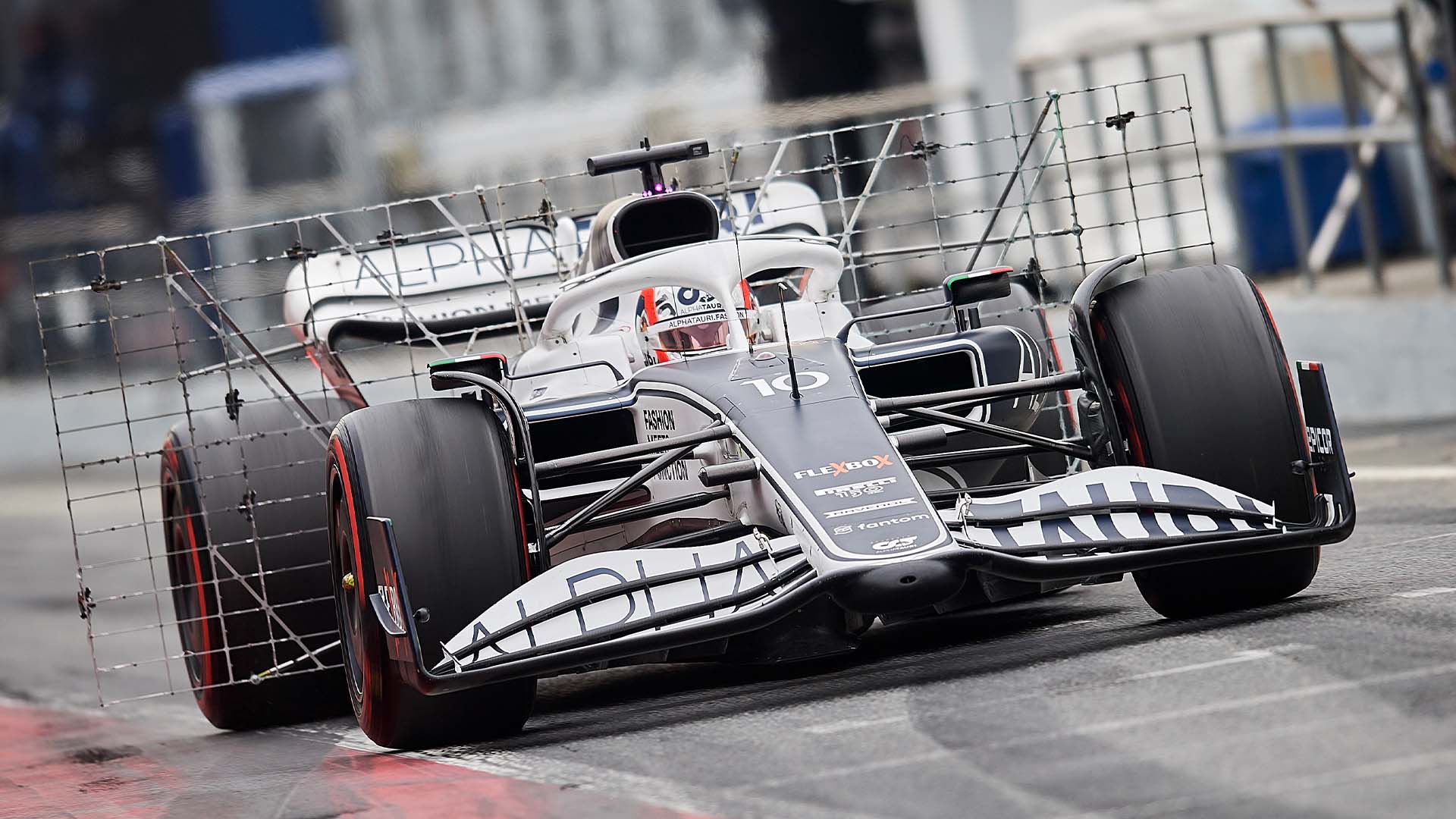

Formula 1 has completed its first three days of testing the 2022 cars. Sorry, not testing them: shaking them down in a way that by no means involves testing, which is why it wasn’t televised. Testing starts in Bahrain next month and will, naturally, be completely different. Still, we’ve managed to learn a few new things about them so far, including a funky new problem engineers will be working furiously to try and stop before the first race.
1. A Sense of Porpoise
F1 teams knew that the radically changed aerodynamics of 2022’s cars was likely to throw up some interesting outcomes. But until they got them on track, going at anything like competitive pace, there was no way to really find out. That’s why in-person testing matters, even if you have the biggest and best computers in the world to simulate on.
The big problem (and somewhat surprise) of testing is a movement in the car called “porpoising.” Basically, a bit like a porpoise or dolphin, the car pitches forward to its front wing as downforce increases with speed. When the downforce maxes out it’s released and bounces back up, leading to a motion a bit like the way a porpoise swims. That might sound exaggerated but slowed-down footage of cars on the straights—which is where this happens, under constant acceleration—shows quite how dramatic it is.
Charles LeClerc isn’t going over bumps here as Barcelona is a pretty smooth track; this is just the aero doing its thing and accidentally going a bit early 2000s hip-hop video in the process:
2. Not Haas’ Biggest Problem Right Now But…
At any test, the more miles you can get on the car, the better. Short or interrupted running is bad for any team but especially to be expected from backmarkers like Haas who don’t have state-of-the-art simulation to try and get everything in near-perfect order before they turn up.
Not that anyone’s talking about their mileage this week while they enter into a crisis about one of their drivers and their title sponsor. But it’s still not looking great for them or Alfa Romeo, who had a particularly bad first day.
Here are the teams’ final lap counts and Ferrari, who’s looked rapid for whatever value early testing times count, are a long way ahead.
- Ferrari 439
- Mercedes 393
- Williams 374
- Red Bull 358
- McLaren 328
- AlphaTauri 309
- Alpine 304
- Aston Martin 296
- Haas 160
- Alfa Romeo 146
3. Red Bull Is Back

Throughout the 2021 season, there was a kind of last-ditch level of enthusiasm that Red Bull was bringing to the table, continuing to upgrade its car all season to take the title fight to the wire. Was the first team in the turbo-hybrid era who could really challenge Mercedes having to throw so much at it they’d basically Nico Rosberg themselves into retirement the next year?
Turns out: no. Red Bull hasn’t looked the fastest and its porpoising problems have been severe, but particularly Max Verstappen has put in plenty of laps, which is what counts at this point. On the first day of the test he did 147 laps on his own, only narrowly surpassed by Ferrari’s driver pair sharing duties. That’s over twice the length of the Spanish Grand Prix at the same circuit.
Verstappen being a madlad aside, it’s also clear that Red Bull is playing interesting games. The side-floor of their car is uniquely shaped into a single, continuous fin, and if anyone has aerodynamic tricks up their sleeve then it’s surely Adrian Newey. Lewis Hamilton was very interested in the car on Wednesday morning…
4. No Smoke Without Fire

F1 cars run at, obviously, completely different margins to road cars. If road cars went on fire anywhere nearly as frequently as race cars, we’d probably all be way more worried about getting into them.
Still, it’s not great when it happens. There hadn’t been too many major reliability issues until Friday when during the morning session both Fernando Alonso’s Alpine and Sebastian Vettel’s Aston Martin decided they’d rather not bother finishing the day and put up a smoky protest on track. It ended both teams’ runnings prematurely, which isn’t great but I guess that’s what testing—sorry, shaking down—is for.
5. And The Times…
Before the 2022 rules came in, there was a lot of talk that the cars would be up to five seconds slower. And sure, they’re not going faster yet, but the gap is a lot less dramatic than it might have been. Here’s every team’s fastest time of the three days:
- Mercedes 1:19.138 (Lewis Hamilton, Friday)
- Red Bull 1:19.556 (Sergio Perez, Friday)
- McLaren 1:19.568 (Lando Norris, Wednesday)
- Ferrari 1:19.689 (Charles Leclerc, Thursday)
- AlphaTauri 1:19.918 (Pierre Gasly, Thursday)
- Aston Martin 1:19.924 (Sebastian Vettel, Friday)
- Williams 1:20.699 (Nicholas Latifi, Friday)
- Alpine 1:21.242 (Fernando Alonso, Friday)
- Haas 1:21.512 (Nikita Mazepin, Thursday)
- Alfa Romeo 1:21.885 (Guanyu Zhou, Thursday)
Got a story tip? Mail it in on tips@thedrive.com